Ready to baklava good time? Indulge in the flaky layers of our vegan Persian Baklava dripping with rosewater syrup and topped with pistachios.
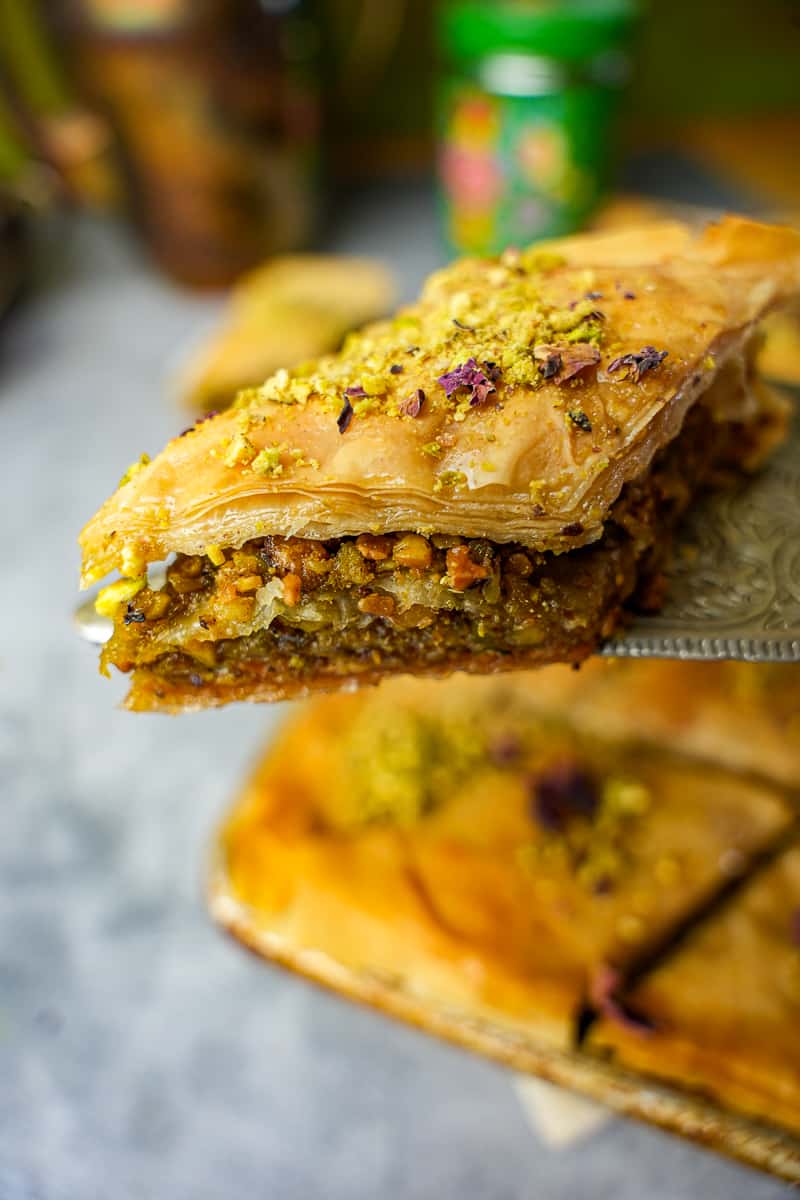
This baklava makes the perfect dessert to serve after a meal of my vegan shawarma, vegan kofta on freshly grilled pita bread, and taboule (with or without a drizzle of Lebanese Tarator)!
Each layer of crispy, golden pastry is delicately layered with a nutty mixture of ground pistachios, cinnamon, and a hint of cardamom. As you sink your teeth into the flaky texture, you'll be hit with the sweet, floral notes of the rosewater syrup, elevating your senses to the zeta-level where you dance at a disco party with talking dogs who wear hats.
Grab your baking pan and let’s get this baby into the oven!
Jump to:
- 🥰Why you are going to adore the ever-loving heck outta this recipe
- 🎥Learn how to make vegan baklava perfectly in a fun online cooking class!
- 🧈Some of the notable ingredients for making baklava
- 🤯Baklava variations
- 📖A Flaky and Fabulous Guide to Making Perfectly Plant-Based Baklava Every Time
- 🍽️Serving Ideas
- ❗️Important tip
- 🤷♀️Recipe FAQs
- ✌️My favey dishes to serve with Baklava:
- Vegan Persian Baklava with Rosewater Syrup and Pistachios
🥰Why you are going to adore the ever-loving heck outta this recipe
🍰 Effortless Elegance Delight Indulge in a fancy-feeling dessert that's surprisingly easy to make—perfect for beginners or a fun project with the kids!
🌰 Pistachio Powerhouse Discover the goodness of pistachios! Packed with protein, healthy fats, and essential nutrients like potassium, thiamine, B6, and phosphorus. It's all the good stuff for your well-being!
⏳ Weeks of Sweet Bliss Store this baklava properly, and you've got delightful teatime treats for weeks with minimal effort!
🎥Learn how to make vegan baklava perfectly in a fun online cooking class!
I taught a falafel and vegan meze cooking class that featured this rosewater baklava recipe as a dessert. Watch and learn, or cook along with me!
🧈Some of the notable ingredients for making baklava
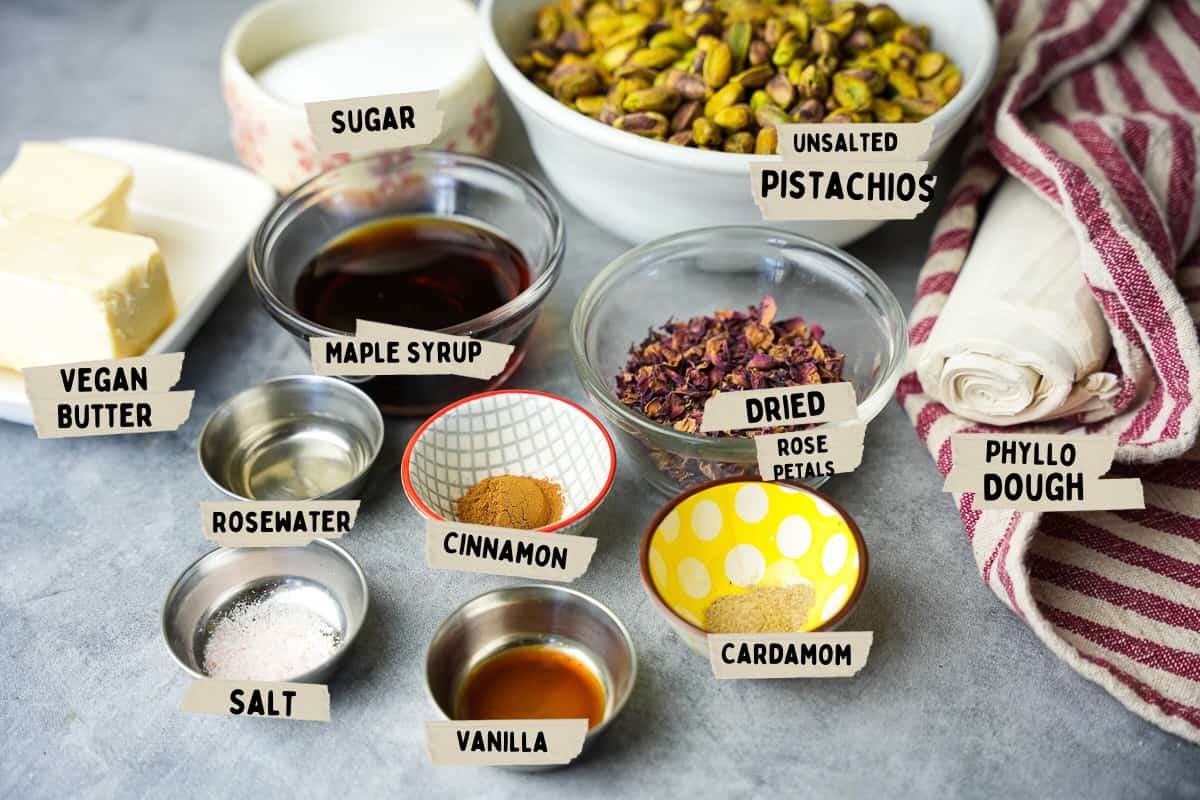
Phyllo Dough
Phyllo dough (sometimes spelled fillo dough)is a thin, unleavened pastry that is commonly used in Mediterranean and Middle Eastern cuisine. It is made by rolling out very thin layers of dough and stacking them on top of each other. Almost no one in their right mind makes phyllo dough from scratch. It is available frozen in most supermarkets. By default, it is usually vegan, but it’s always a good idea to check the ingredients when buying anything premade.
Pistachios
Packed with protein, fiber, and healthy fats, these little green gems are a surefire way to “shell” out some delicious nutrition. For this recipe, get unsalted shelled pistachios. You can also substitute them with walnuts, which are another popular option for baklava making.
Vegan butter
Vegan butter is a plant-based alternative to traditional butter that is made without any animal products. It is typically made from oils like coconut, olive, or sunflower oil, along with other ingredients like soy or plant-based emulsifiers. The vegan butter that is available in block form is handier to work with than the plastic tubs of margarine are, because the paper wrappers are marked with measurement indications.
Rose water
Rose water is made by steeping rose petals in water. It has been used for centuries in Middle Eastern, Indian, and Mediterranean cuisines as a flavoring for desserts. Rose water is also used in body care products, so when selecting/ordering rose water, make sure it is food-grade and safe for consumption.
See the recipe card at the bottom of this page for the complete list of ingredients and their quantities.
🤯Baklava variations
- Walnut filling- In Turkey, Greece, Syria, and Lebanon, walnuts are almost as popular as pistachios for making baklava. Simply substitute an equal amount of raw walnut pieces in place of the pistachios.
📖A Flaky and Fabulous Guide to Making Perfectly Plant-Based Baklava Every Time
You wanna see how this tray of golden, flaky heaven gets made? I will grab you by the hand and walk you up the baklava success mountain! Or you can follow along with the easy-to-print recipe card towards the bottom of this page.

Step 1
In a saucepan, combine sugar, water, maple syrup, rose water, vanilla, and salt. Heat the mixture on a high flame until it boils, then turn off the flame and let it cool to room temperature.
Step 2
Add the pistachios (or walnuts if you are using them instead), cinnamon, and cardamom to a food processor fitted with an S blade.
Step 3
Process the nuts and spices for about 60 seconds until coarsely ground. Set aside ¼ cup of the ground pistachios for garnishing the baklava with after it is baked.
Step 4
So phyllo comes already cut in 9X13 size, and some is twice as wide as that. Iff you have the larger half sheet-pan size phyllo, cut it in half into two short rectangles. Grease a quarter sheet size baking pan or 9X13 baking dish with melted vegan butter.
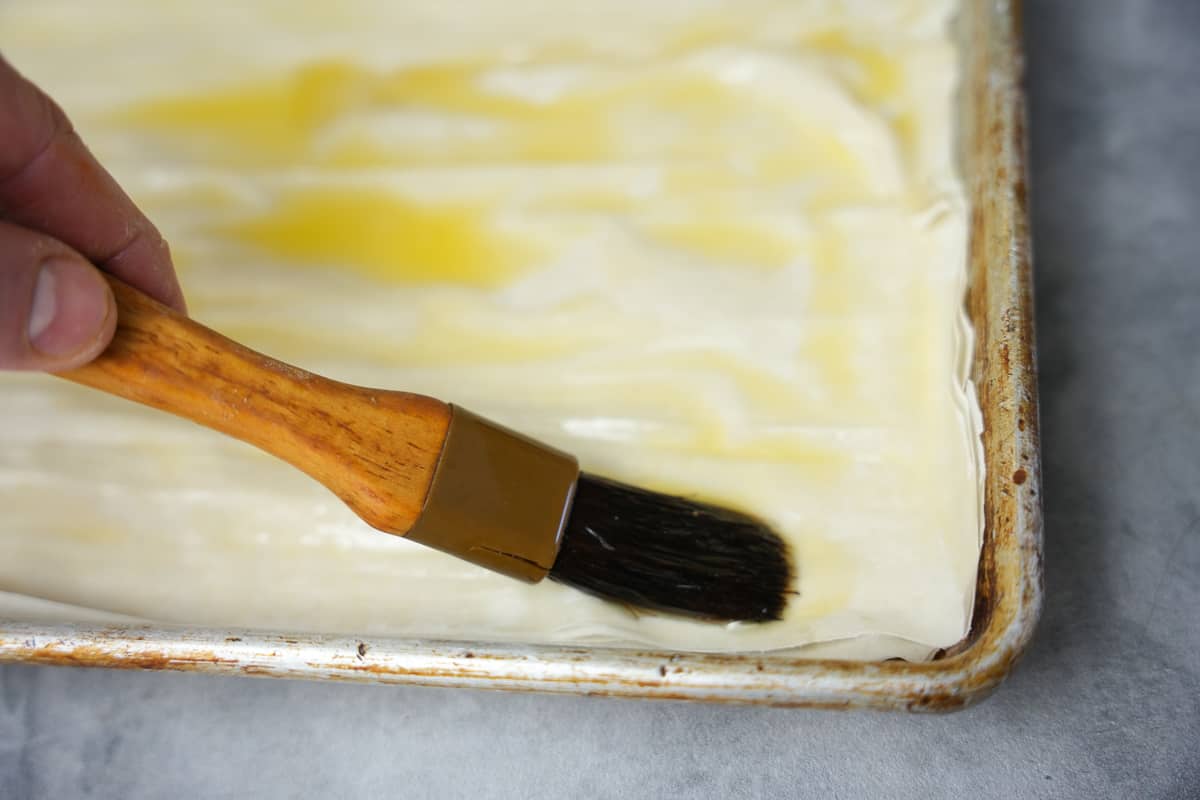
Step 5
Layer two sheets of phyllo dough on the bottom of the pan, brush with vegan butter, and repeat the process until there are 8 sheets on the bottom.
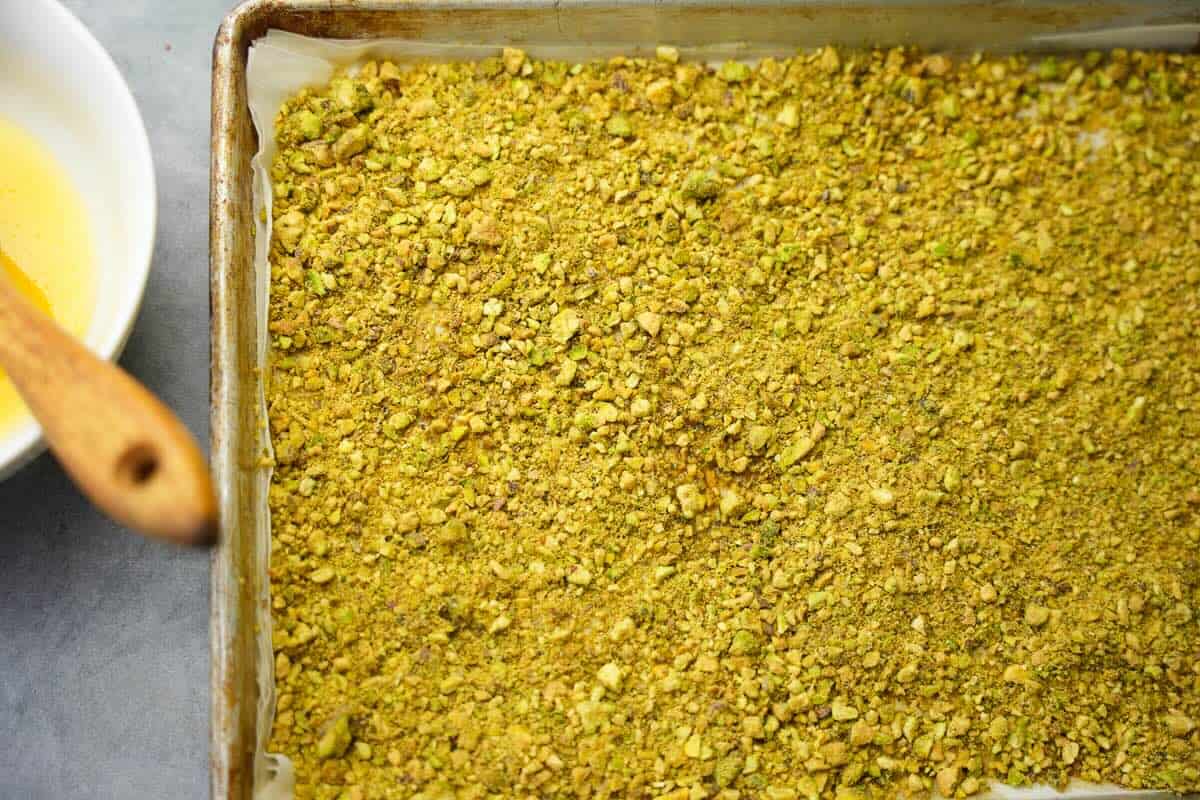
Step 6
Sprinkle ⅓ of the ground pistachios over the phyllo base, then layer two sheets of phyllo on top, brush with vegan butter, and add another ⅓ of the ground pistachios. Repeat until all the filling is used up. Add the final sheets of phyllo dough to the top, brushing every two layers with vegan butter.
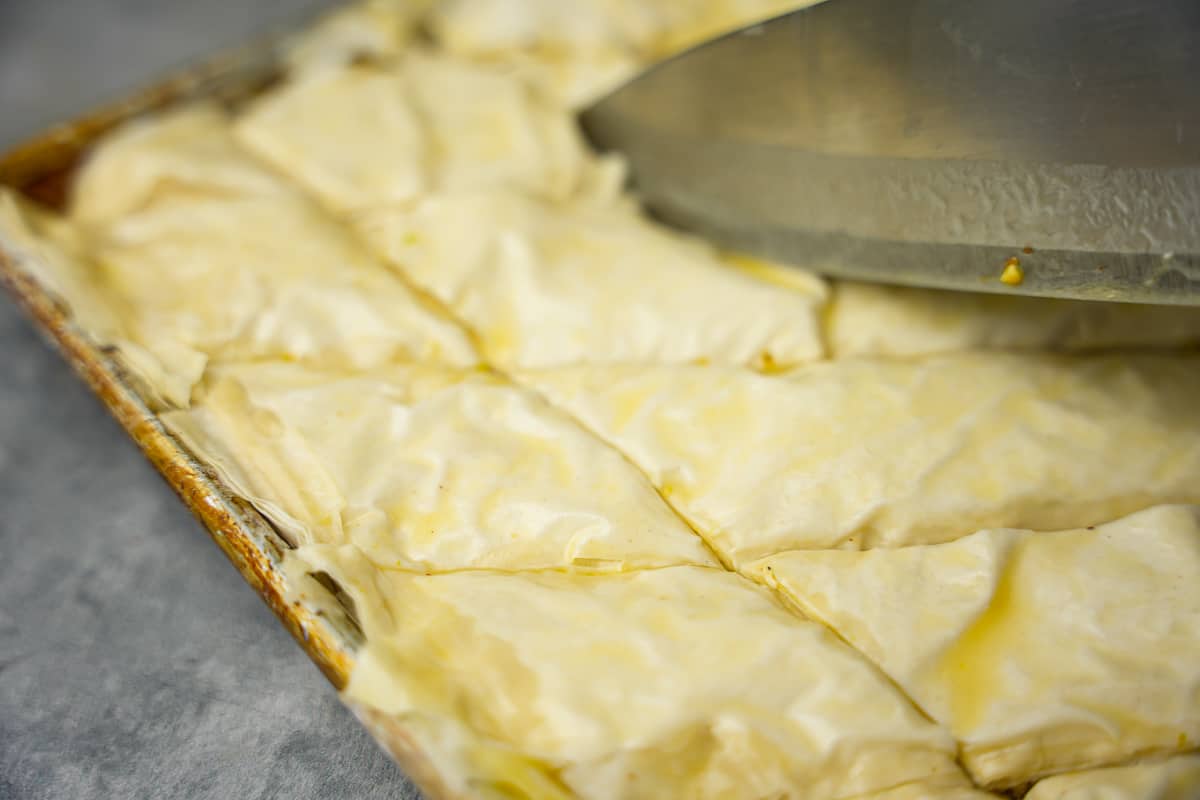
Step 7
Butter the top sheet of phyllo well. Cut the baklava into 6X4 rows (either square or diamond shaped) with a sharp knife, making sure to cut through to the bottom with every cut.
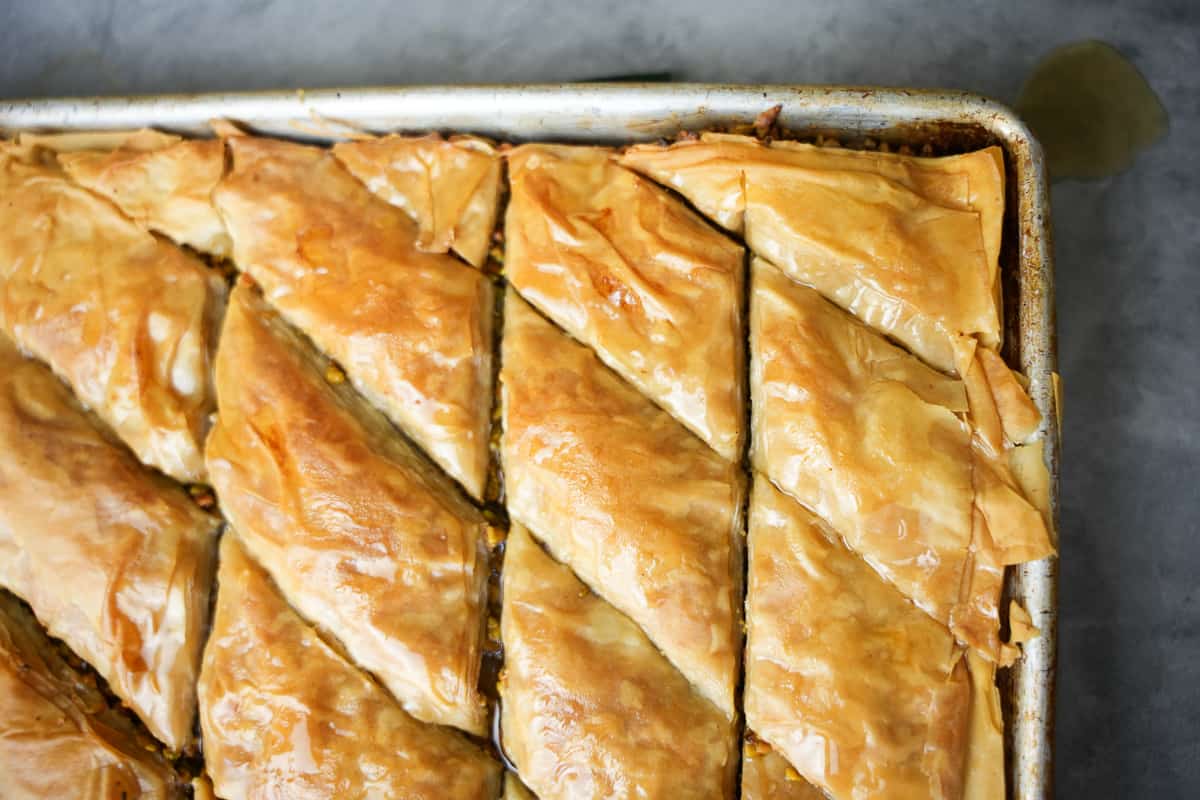
Step 8
Bake the baklava in the oven for 30-35 minutes until it becomes golden brown and crisp.
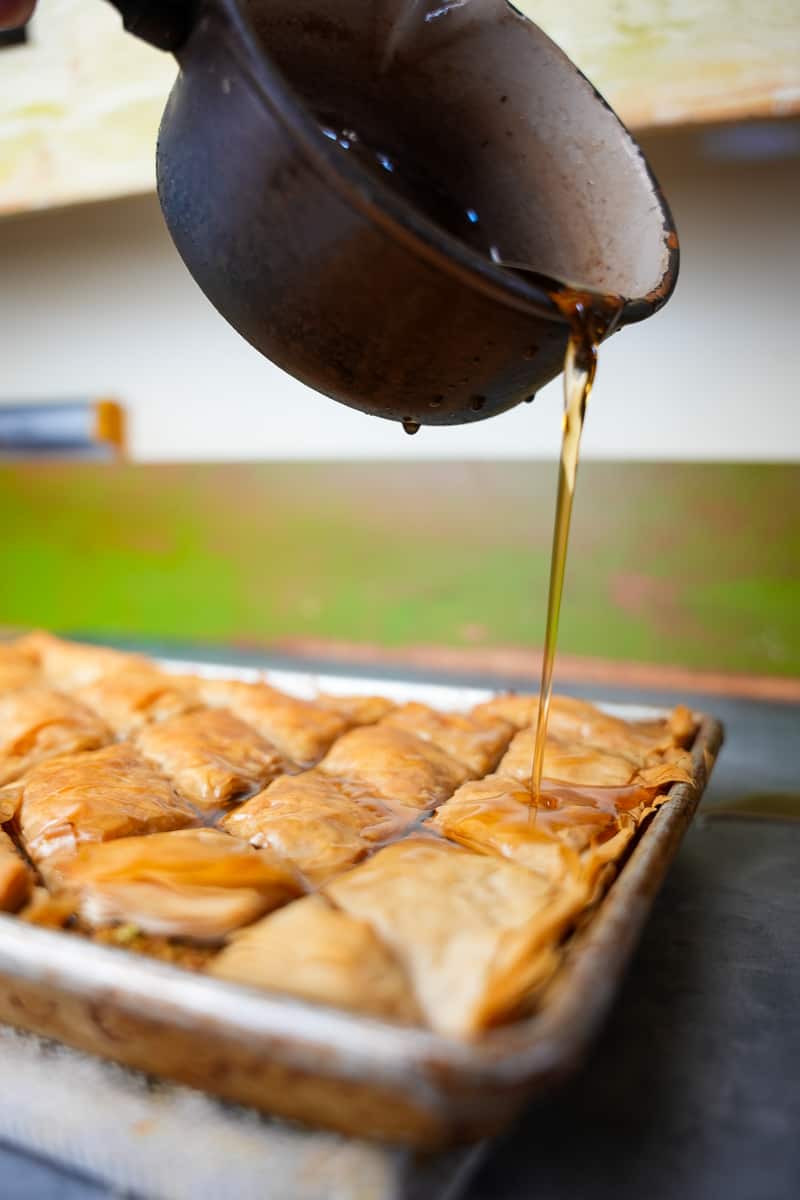
Step 9
While the baklava is piping hot and just freshly removed from the oven, pour the sugar syrup over it.

Step 10
Use a sharp knife to recut the baklava and ensure the syrup penetrates all the layers.
While still hot and sticky, sprinkle each piece with ground pistachios and dried rose petals. Let the baklava cool to room temperature before serving.
🍽️Serving Ideas
Vegan baklava makes a wonderful partner in crime to good quality black tea in the afternoon as a pick-me-up. It is also the obvious dessert of choice for Turkish meals, including some of my faves: Şakşuka, Ezogelin Corbasi, Zeytinyağlı Kereviz Yemeği, and Acılı Ezme.
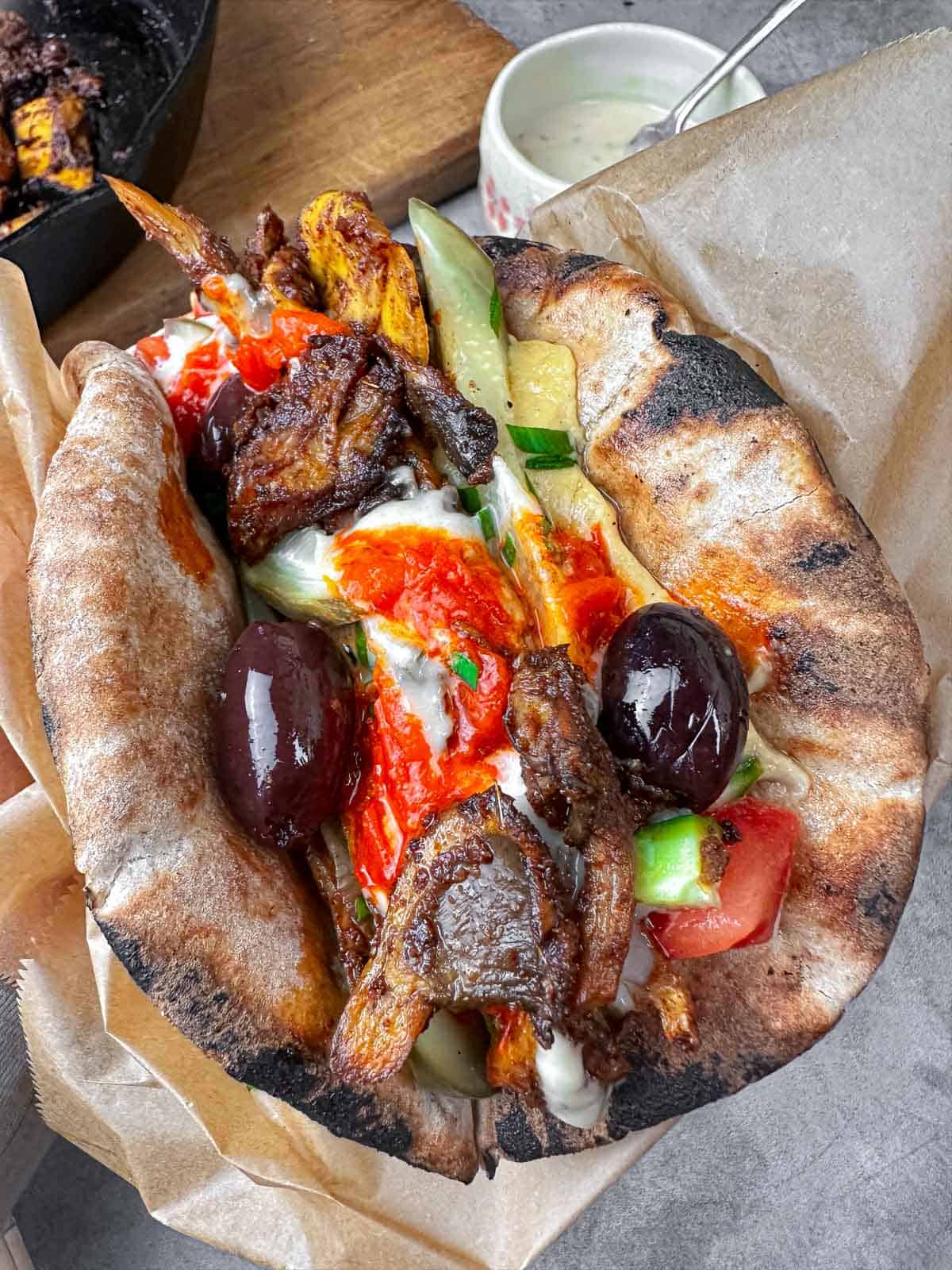
❗️Important tip
Phyllo pastry dries out with remarkable speed due to being ultra-thin. To prevent the dough from becoming dry and brittle, I suggest placing it flat on a clean work surface and covering it with a slightly damp kitchen towel between uses. Despite the fact that you may only leave it unattended for brief periods, you will be amazed at how quickly it dries out if it is not protected in this manner.
🤷♀️Recipe FAQs
Various nations lay claim to being the originator of baklava, similar to the debates over falafel, halvah, and many other dishes.
The origin of baklava is uncertain, but it is believed to have originated in the ancient Assyrian civilization, which spread throughout the Middle East and into the Mediterranean region. Another theory is that baklava may have been introduced to the region by the Ottoman Empire, which ruled much of the area for centuries.
The first recorded recipe for baklava is from a 10th-century Arabic cookbook called Kitab al-Tabikh (Book of Cookery). The recipe called for a simple dough made from flour, water, and vinegar, layered with chopped nuts, and sweetened with honey.
Baklava became a popular dessert throughout the Ottoman Empire, and variations of the recipe were created in different regions. In Greece, for example, the recipe often includes cinnamon and cloves, while in Turkey, it may be made with pistachios instead of walnuts.
Baklava is a delicate pastry that needs to be stored properly to maintain its texture and flavor. Here's how you can store baklava after making it:
Cool the baklava completely: Allow the baklava to cool down to room temperature before storing it. This prevents condensation from forming inside the container.
Store in an airtight container: Transfer the baklava to an airtight container with a tight-fitting lid. This helps prevent moisture from getting in and making the pastry soggy.
Store at room temperature: Baklava can be stored at room temperature for up to two weeks. However, if you live in a humid environment, it's best to store it in the refrigerator to prevent it from getting moldy.
Do not stack the baklava: Do not stack the baklava on top of each other as this can cause the pastries to stick together and lose their crispiness.
Recrisp the baklava: If you find that the baklava has lost some of its crispiness, you can reheat it in the oven at 350°F for 5-10 minutes. This will make the pastry crispy and fresh again and restore its texture.
Remember to store the baklava in a cool, dry place away from direct sunlight and heat sources. Properly stored baklava can last for up to two weeks, but I will be so shocked if you don't eat it all long before then! If that happens, you have wayyyyyy more self-control than me.
Believe it or not, baklava can be successfully frozen and thawed without ruining it, as long as it is stored properly. Here are some tips for freezing and thawing baklava:
Allow the baklava to cool completely before freezing it. If the baklava is still warm, it may create condensation in the packaging and become soggy.
Wrap the baklava tightly in plastic wrap or aluminum foil to prevent freezer burn and protect it from odors.
Place the wrapped baklava in an airtight container or freezer bag, and label it with the date of freezing.
Store the baklava in the freezer for up to three months.
To thaw the baklava, remove it from the freezer and let it come to room temperature in the packaging. This should take about two hours.
Once the baklava has thawed, remove it from the packaging and reheat it in a 350°F (175°C) oven for 12-15 minutes, or until it is warmed through and crispy on top and around the edges.
It is important to note that while freezing and thawing baklava can preserve its flavor and texture, it may not be exactly the same as freshly made baklava. The rosewater syrup may be slightly absorbed into the phyllo dough layers, and the texture may be slightly softer. However, if you follow these tips, you can still enjoy delicious baklava even after it has been frozen and thawed.
✌️My favey dishes to serve with Baklava:
Say Hi on Social! 👋
Follow me on Instagram & Facebook for more recipes.
❤️Love this recipe? It helps me out greatly if you leave a 5-star 🌟🌟🌟🌟🌟rating in the recipe card below and maybe even leave me a lovey-dovey comment too!
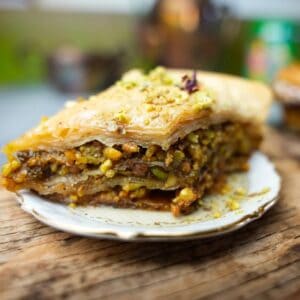
Vegan Persian Baklava with Rosewater Syrup and Pistachios
Ingredients
- 1 lb phyllo dough
- 1 cup sugar my preference is evaporated cane juice
- ⅔ cup water
- ⅓ cup maple syrup
- 1 ½ teaspoons rosewater
- ½ teaspoon vanilla extract
- ¼ teaspoon salt
- ¼ cup dried rose petals
- 1 lb. unsalted shelled pistachios about 3 ¼ cups
- ½ teaspoon ground cinnamon
- ¼ teaspoon ground cardamom
- ¾ cup vegan butter room temperature
Instructions
- Thaw phyllo dough to refrigerator temperature if it is frozen, by keeping it in the refrigerator for 12 hours.
- Preheat oven to 350 degrees.
- Place the sugar, water, maple syrup, rosewater, vanilla, and salt into a saucepan and bring it up to a boil over a high flame. Once bubbling, turn off the flame under the pot and allow it to cool to room temperature.
- Place the pistachios, cinnamon, and cardamom into a food processor and grid for about 60 seconds to form a coarse meal. Do not process so long that the nuts start turning into nut butter. Take out ¼ cup of the ground pistachios and reserve them to the side to garnish the baklava with later.
- Roll out the phyllo dough and cut it down the middle to make two short rectangles.
- Lightly butter the bottom and sides of a ¼ sheet baking pan or 9X13 baking dish using a brush.
- Spread two sheets of phyllo dough out on the bottom of the baking pan, and brush with vegan butter. Repeat adding and buttering phyllo sheets, two at a time until there are 8 sheets on the bottom of the pan.
- Spread out ⅓ of the ground pistachios from the food processor evenly over the phyllo base. Add 2 sheets of phyllo on top of the ground nuts, butter them and then add another ⅓ of the ground pistachios. Continue like this until all of the filling is used up. Add the final sheets of phyllo dough to the top, buttering every two layers until all remaining phyllo sheets are used up.
- Butter the top sheet of phyllo well. It should look wet and shiny with melted butter.
- Cut the baklava into 6X4 rows, either into squares or diamond shapes with a very sharp knife. This should result in 24 servings. Make sure the knife cuts all the way through to the bottom with every cut.
- Place the baklava into the oven and bake for 30-35 minutes until crisp and golden brown.
- Remove the baklava from the oven, and pour the sugar syrup over it. While the syrup absorbs, use a sharp knife to carefully re-cut everywhere you had cut before it was baked. This step is important so that the syrup penetrates into all of the layers. If any syrup pools up in the corners, spoon it back over the top to evenly saturate the whole tray.
- While the baklava is still hot and sticky, sprinkle each piece with a little dash of ground pistachios and a couple of pieces of dried rose petals.
- Allow the baklava to cool to room temperature before serving.

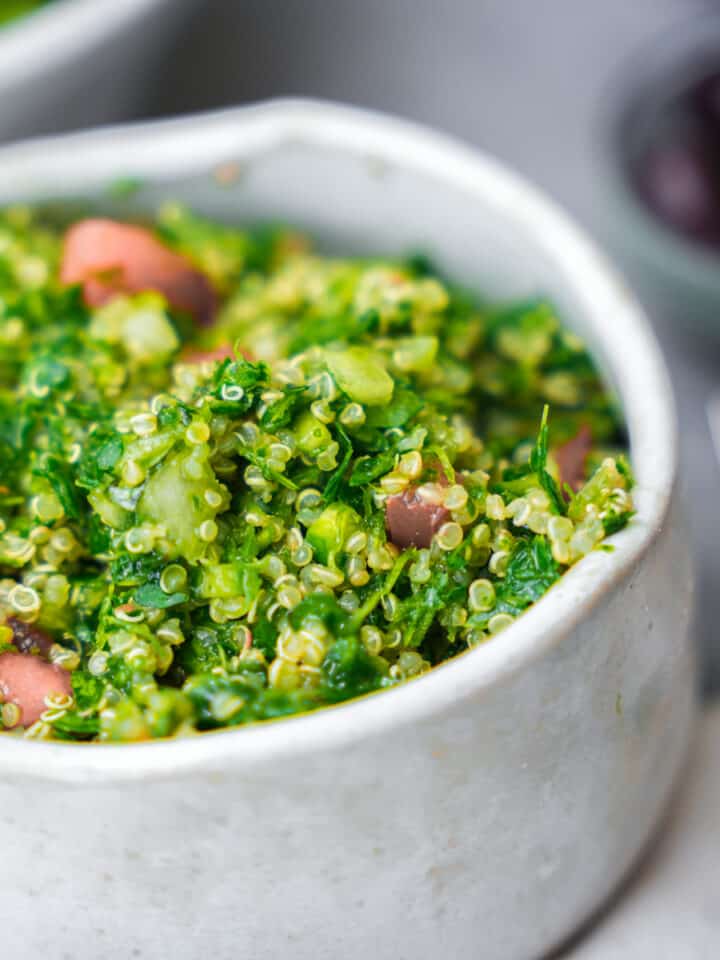
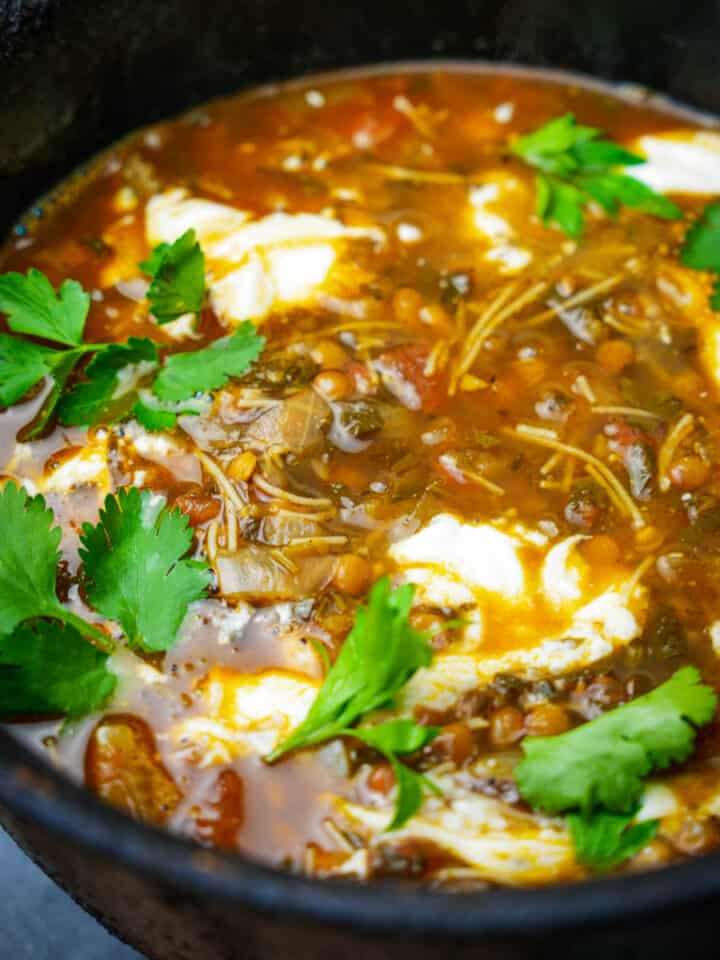

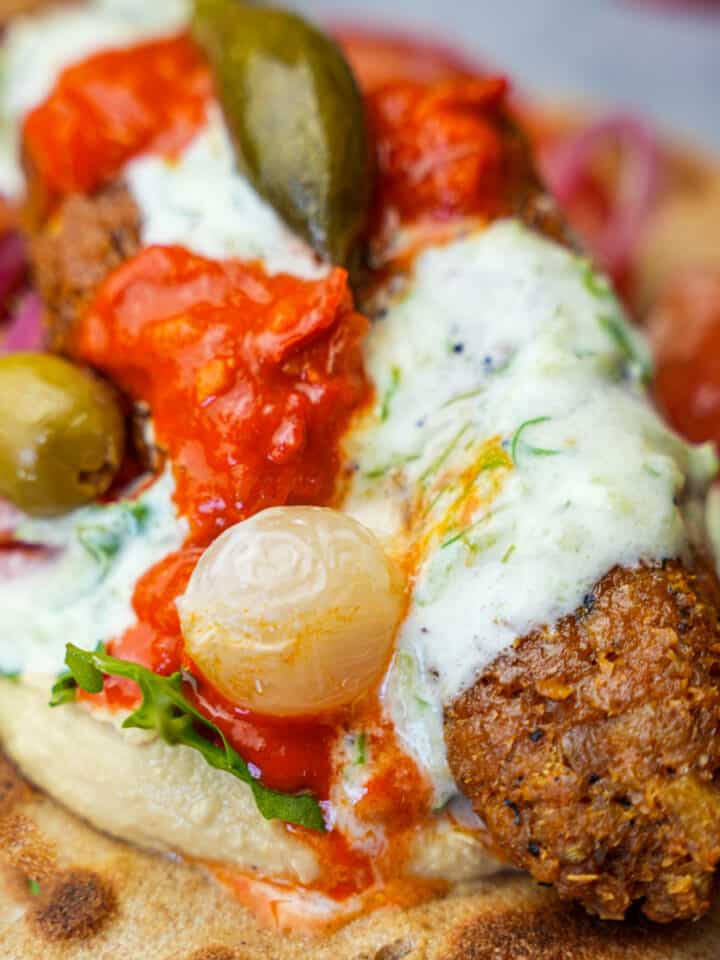
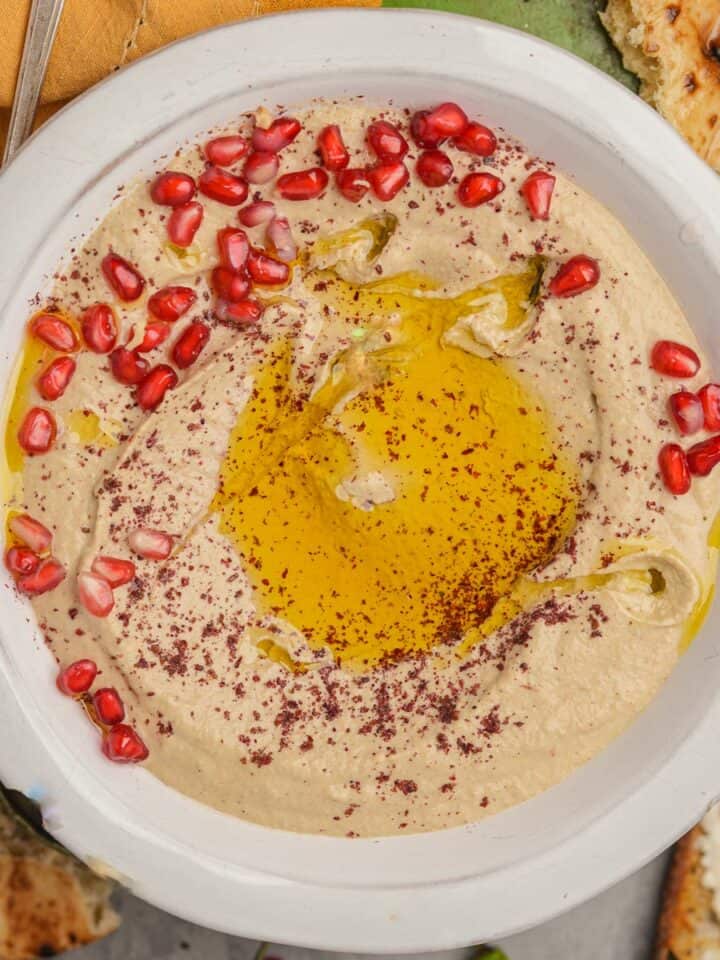
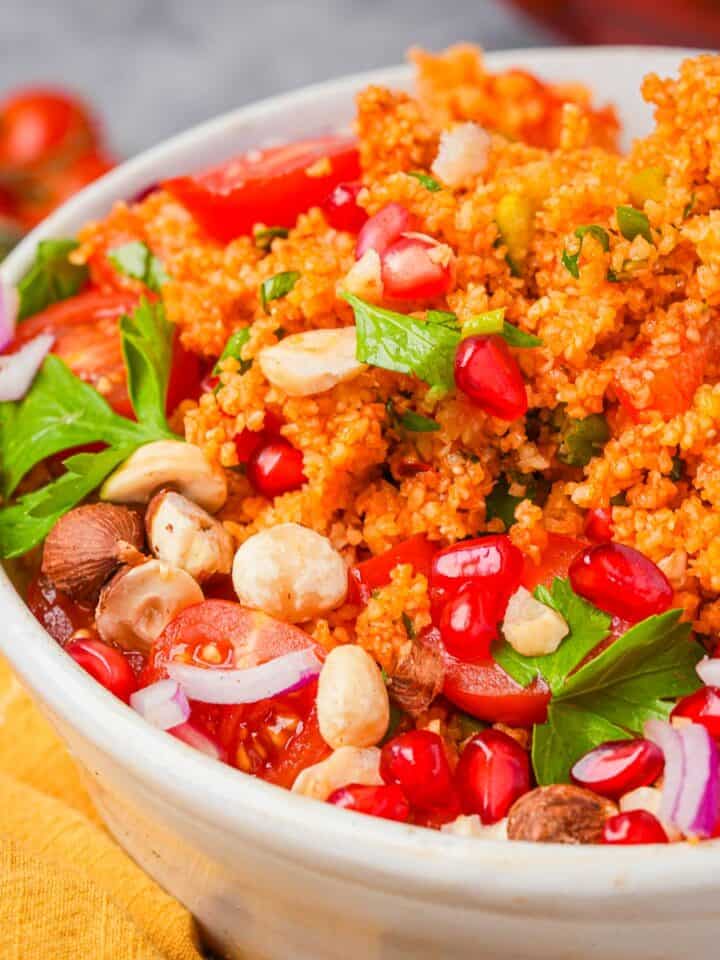
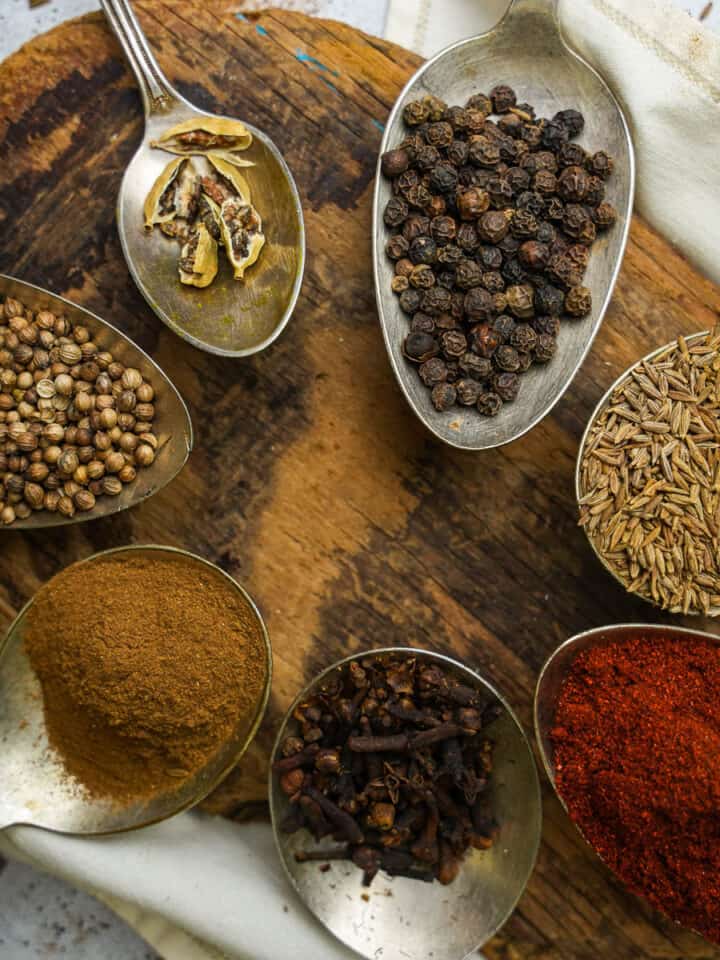
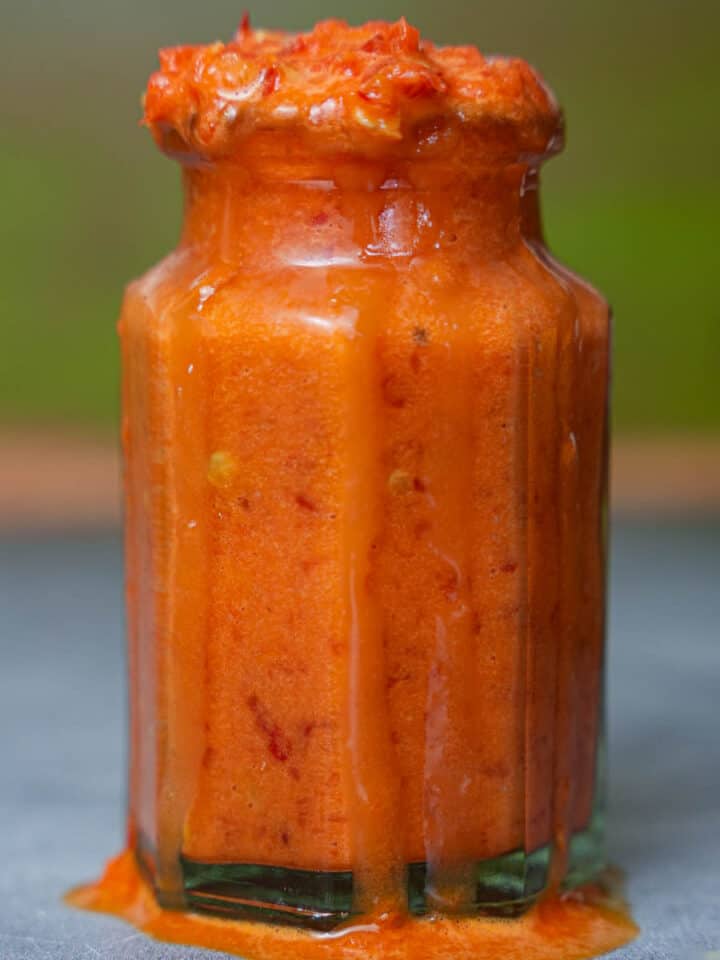

Heva
I recently made this vegan baklava recipe and it was amazing! It was delicious and you would never guess it was vegan. I found the instructions easy to follow and the end product was absolutely scrumptious. I highly recommend this recipe for anyone looking for a vegan dessert option!
Kimberly W
Baklava is one of my favorite desserts but I've always been too intimated by the phyllo to try making it myself. Until this recipe crossed my path, that is. The detailed step by step instructions gave me confidence to give it a try and I'm so glad I did. This baklava is perfection and the process to bring it all together was not at all that difficult when following the steps (also, the tip to keep the dough from drying out was key - do not ignore that!) This recipe has easily become one I will turn to again when I'm jonesing for some baklava or want to impress dinner guests!
I also appreciate the interview with Naciye, whenever she's at the local VegFests I always stop by her kiosk, everything she makes is AMAZING!